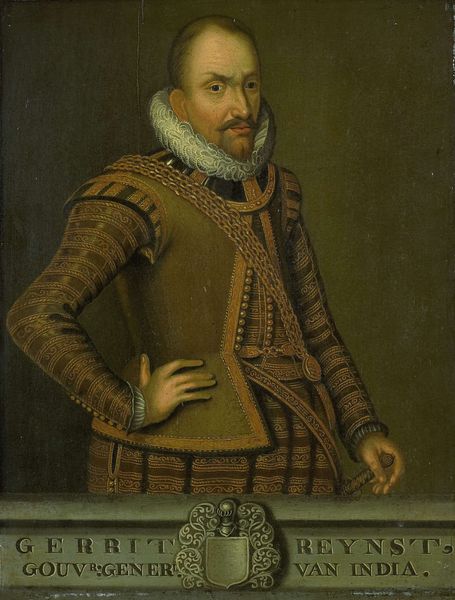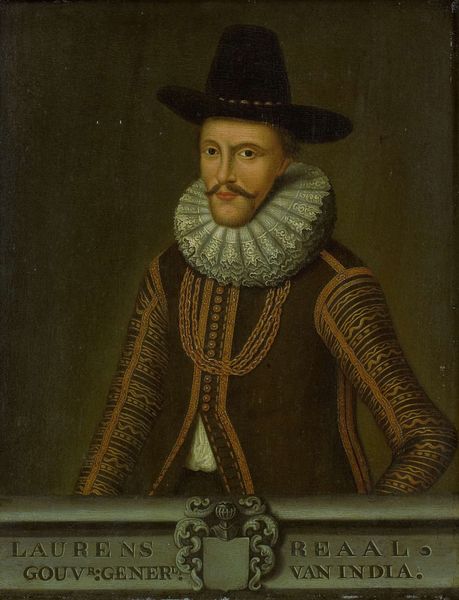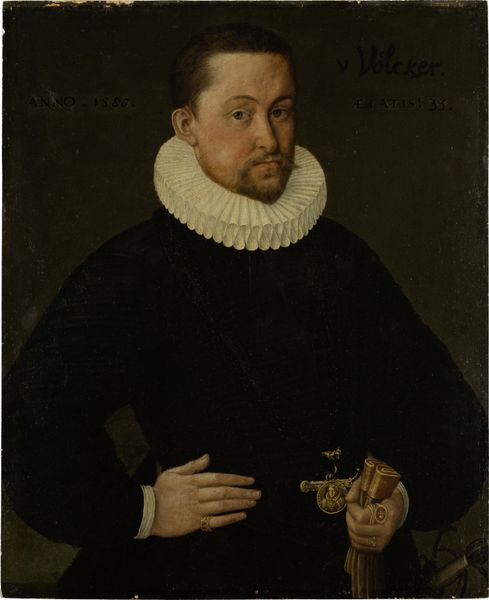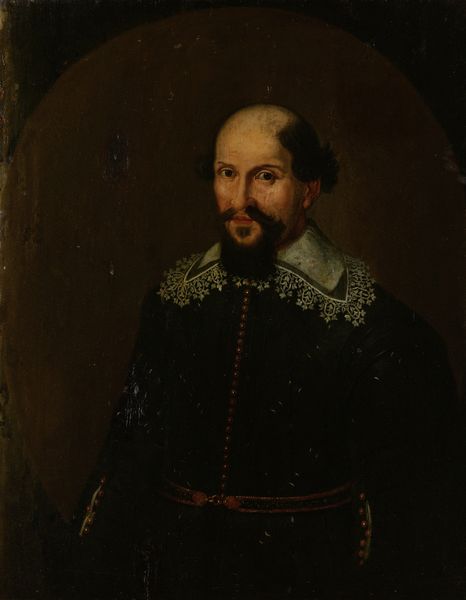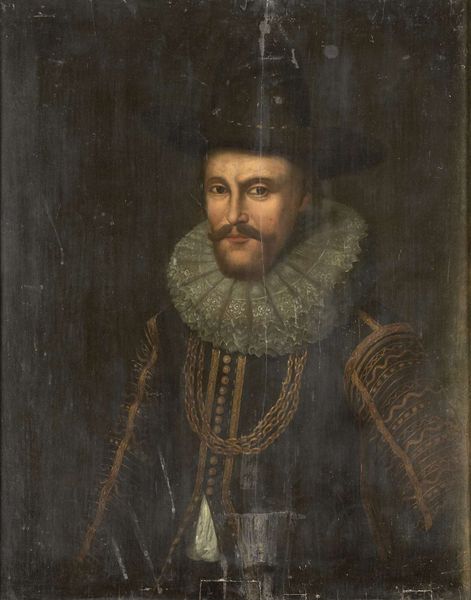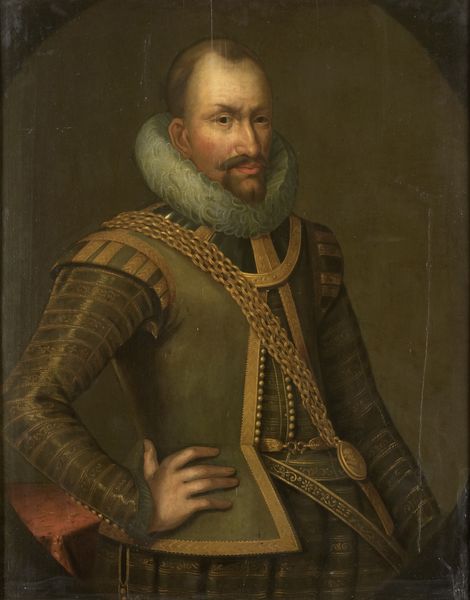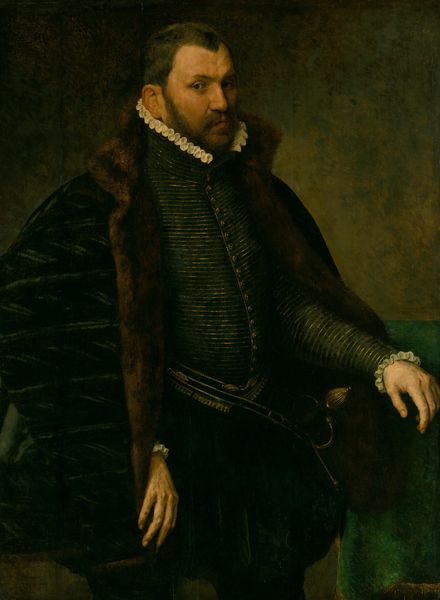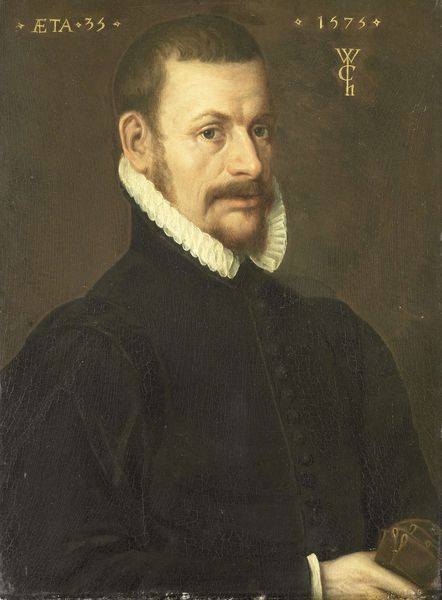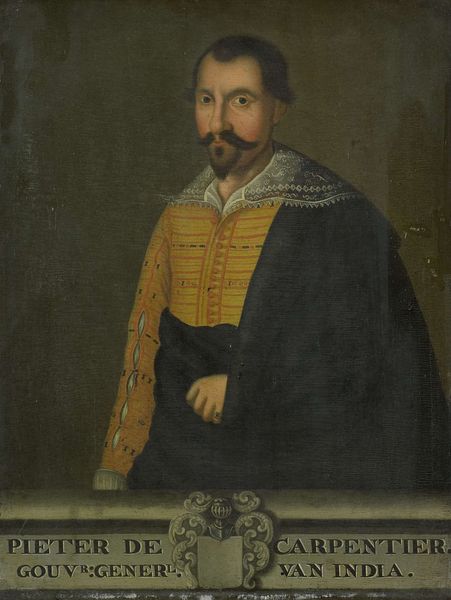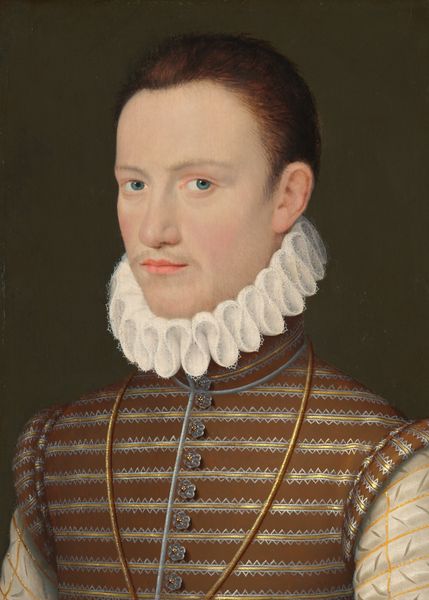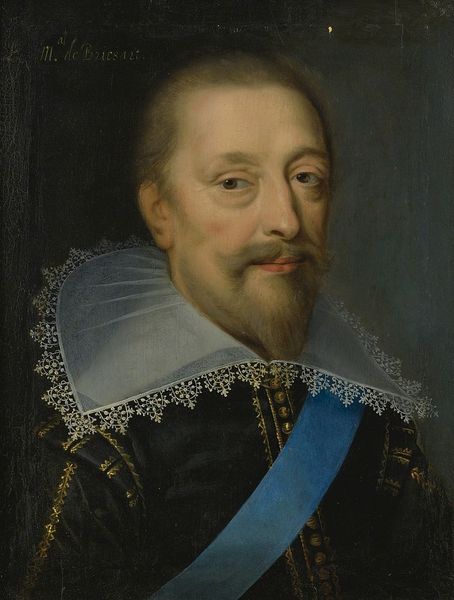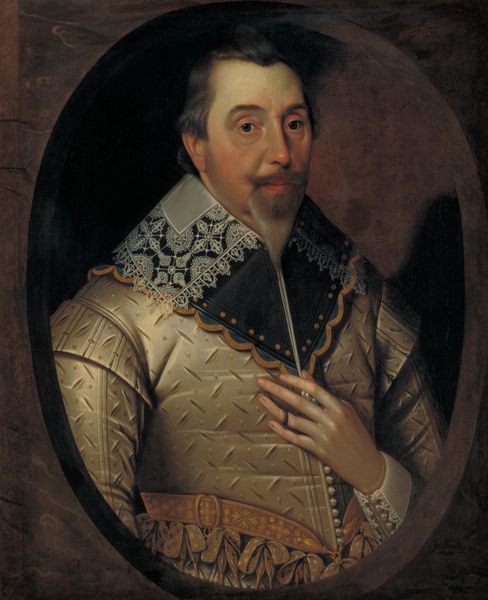
Dimensions: height 33 cm, width 25 cm, depth 3.7 cm
Copyright: Rijks Museum: Open Domain
Curator: Up next is a Dutch Golden Age painting likely crafted between 1750 and 1800. It is an anonymous portrait of Pieter Both, who served as Governor-General of the Dutch East Indies. Editor: The sombre tone immediately strikes me, the subject almost blending into that dark, indeterminate background, only broken by the crisp, white lace collar. Curator: I'm drawn to the layers of artistry involved in creating the lace itself—consider the labor-intensive, specialized craft of lacemaking, alongside the craftsmanship that translates such material into paint. The anonymous artist is depicting another artisan's labor. Editor: The composition and muted palette certainly direct attention to the fine details like that very lace and the man's sharp gaze. I am compelled by how the artist used light to model the face, and by the symmetrical placement of the figure within the frame. It really stabilizes the composition, doesn’t it? Curator: It prompts me to wonder about the social and economic power structures that necessitated and immortalized Both’s position. His belt looks like it is embroidered. Was that adornment standard for individuals appointed to his role? How do we begin to deconstruct the artistic means by which Both sought to legitimize and portray himself to future generations? Editor: Perhaps the symmetry lends to that legitimization. This man certainly knew how to command the painter, with this work, to compose authority and importance onto the canvas. To what extent can that be transferred to the viewer? Curator: The portrait becomes a stage for understanding cultural narratives surrounding colonial governance and representation, which are deeply enmeshed with the consumption of goods like textiles or ornamental embellishments. Editor: For me, that formal arrangement serves as the portal into those layered understandings, emphasizing not just what we see, but how we’re compelled to look. Curator: Exactly. And that’s where an examination of the production of materials comes to reveal wider social systems at play. Editor: And I'm here to point at all of these processes and materials to distill those observations back into a tangible emotional experience!
Comments
No comments
Be the first to comment and join the conversation on the ultimate creative platform.
